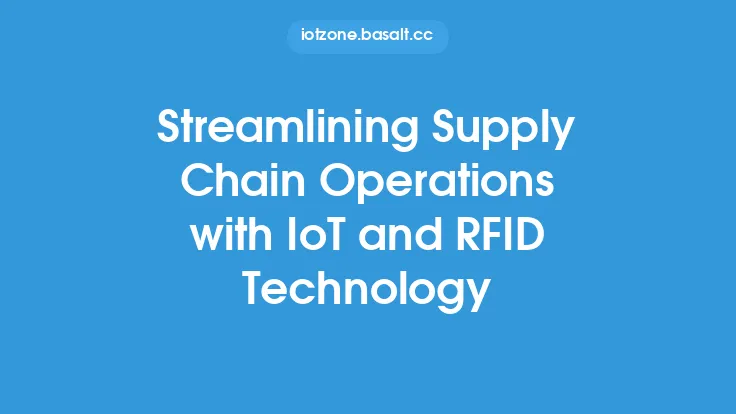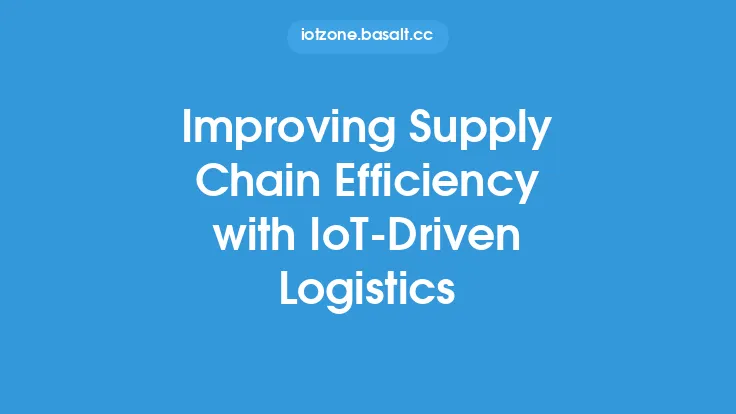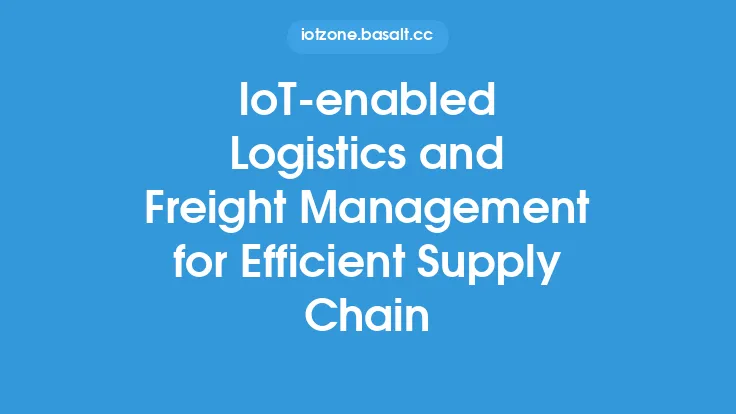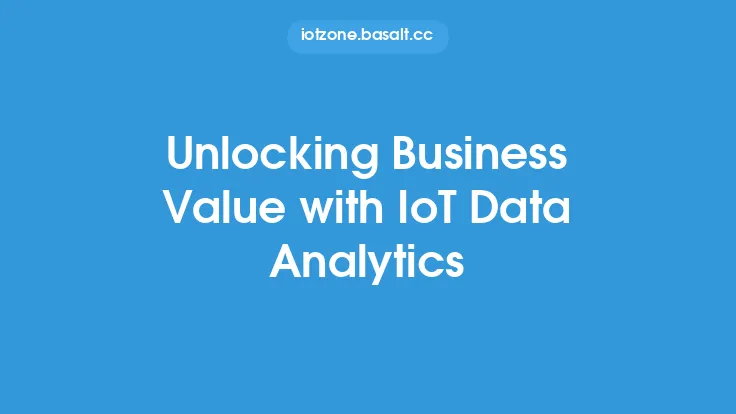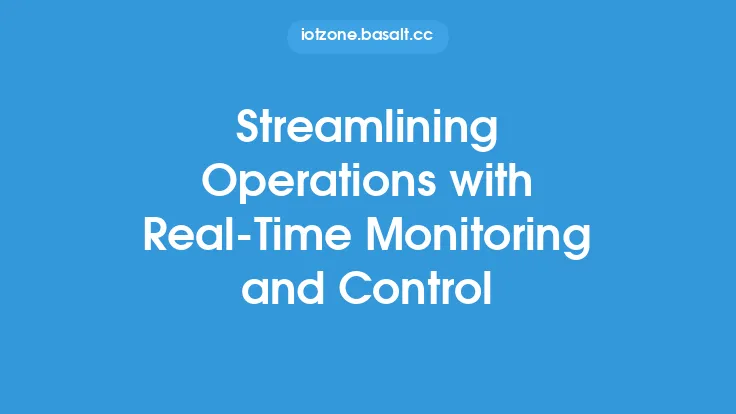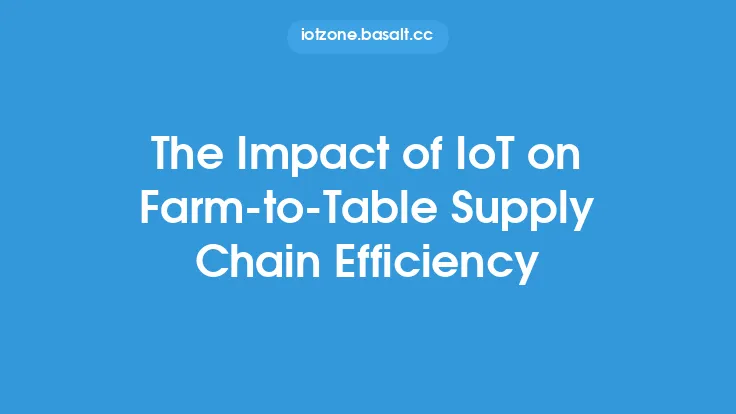The increasing complexity of global supply chains has led to a growing need for efficient and effective management of operations. One key aspect of achieving this is through the use of Internet of Things (IoT)-based data analytics. By leveraging IoT devices and advanced analytics, organizations can gain real-time insights into their supply chain operations, enabling them to make data-driven decisions and drive business value. In this article, we will explore the concept of IoT-based data analytics in supply chain management, its benefits, and how it can be implemented to streamline operations.
Introduction to IoT-Based Data Analytics
IoT-based data analytics involves the use of IoT devices, such as sensors, RFID tags, and GPS trackers, to collect data on various aspects of supply chain operations. This data is then analyzed using advanced analytics tools, such as machine learning and predictive analytics, to gain insights into operational performance. The use of IoT-based data analytics can help organizations to identify areas of inefficiency, optimize processes, and improve overall supply chain performance. Some of the key benefits of IoT-based data analytics include improved visibility, increased efficiency, and enhanced decision-making capabilities.
Key Components of IoT-Based Data Analytics
There are several key components that are involved in IoT-based data analytics. These include:
- IoT Devices: These are the devices that collect data on supply chain operations. Examples include sensors, RFID tags, and GPS trackers.
- Data Management: This involves the collection, storage, and processing of data from IoT devices. This can be done using a variety of tools, such as data warehouses and cloud-based platforms.
- Advanced Analytics: This involves the use of advanced analytics tools, such as machine learning and predictive analytics, to analyze data and gain insights into operational performance.
- Visualization Tools: These are used to present data in a meaningful way, enabling organizations to quickly and easily understand operational performance.
Implementing IoT-Based Data Analytics
Implementing IoT-based data analytics requires a structured approach. The following steps can be followed:
- Define Business Objectives: The first step is to define the business objectives that the organization wants to achieve through the use of IoT-based data analytics.
- Identify Data Sources: The next step is to identify the data sources that will be used to collect data on supply chain operations.
- Select IoT Devices: The organization must then select the IoT devices that will be used to collect data.
- Develop a Data Management Strategy: A data management strategy must be developed to ensure that data is collected, stored, and processed effectively.
- Implement Advanced Analytics: Advanced analytics tools must be implemented to analyze data and gain insights into operational performance.
- Develop Visualization Tools: Visualization tools must be developed to present data in a meaningful way.
Benefits of IoT-Based Data Analytics
The use of IoT-based data analytics can bring several benefits to organizations, including:
- Improved Visibility: IoT-based data analytics can provide real-time visibility into supply chain operations, enabling organizations to quickly identify areas of inefficiency.
- Increased Efficiency: By optimizing processes and reducing waste, organizations can increase efficiency and reduce costs.
- Enhanced Decision-Making: IoT-based data analytics can provide organizations with the insights they need to make informed decisions about supply chain operations.
- Improved Customer Satisfaction: By optimizing supply chain operations, organizations can improve customer satisfaction and loyalty.
Technical Considerations
There are several technical considerations that must be taken into account when implementing IoT-based data analytics. These include:
- Data Security: The security of data is a major concern, particularly in industries where data is sensitive.
- Scalability: The system must be scalable to handle large amounts of data from IoT devices.
- Interoperability: The system must be able to integrate with existing systems and infrastructure.
- Data Quality: The quality of data is critical, and organizations must ensure that data is accurate and reliable.
Real-World Applications
IoT-based data analytics has a wide range of real-world applications, including:
- Predictive Maintenance: IoT-based data analytics can be used to predict when equipment is likely to fail, enabling organizations to perform maintenance before downtime occurs.
- Inventory Management: IoT-based data analytics can be used to optimize inventory levels and reduce waste.
- Supply Chain Optimization: IoT-based data analytics can be used to optimize supply chain operations, reducing costs and improving efficiency.
- Quality Control: IoT-based data analytics can be used to monitor product quality and detect defects early in the production process.
Conclusion
IoT-based data analytics is a powerful tool that can be used to streamline supply chain operations. By providing real-time insights into operational performance, organizations can make data-driven decisions and drive business value. While there are several technical considerations that must be taken into account, the benefits of IoT-based data analytics make it an essential component of any supply chain management strategy. As the use of IoT devices and advanced analytics continues to grow, we can expect to see even more innovative applications of IoT-based data analytics in the future.
